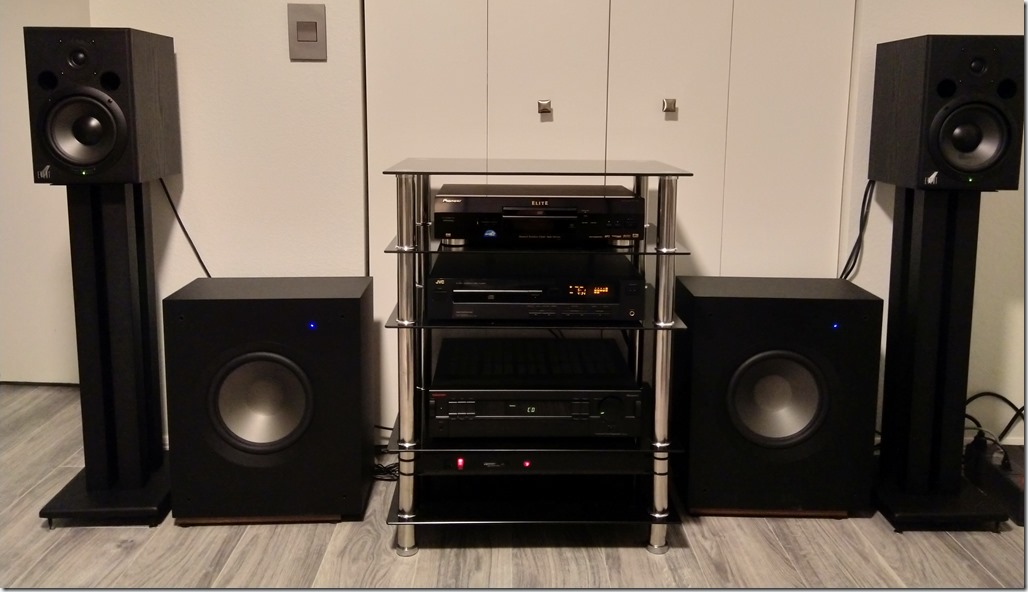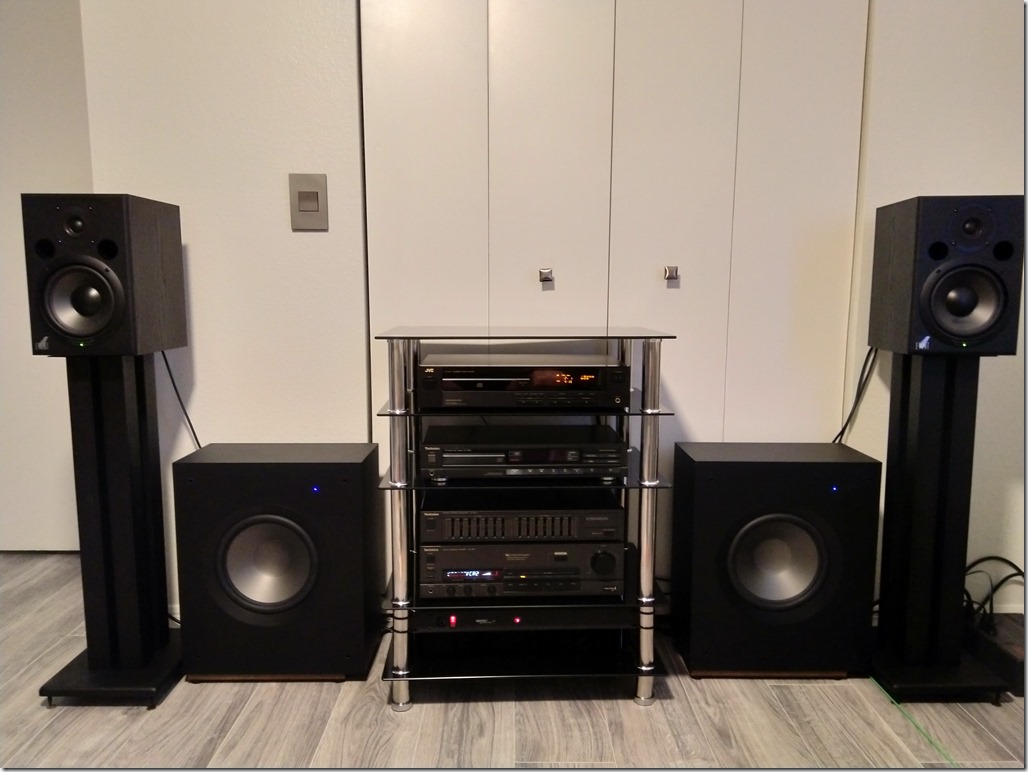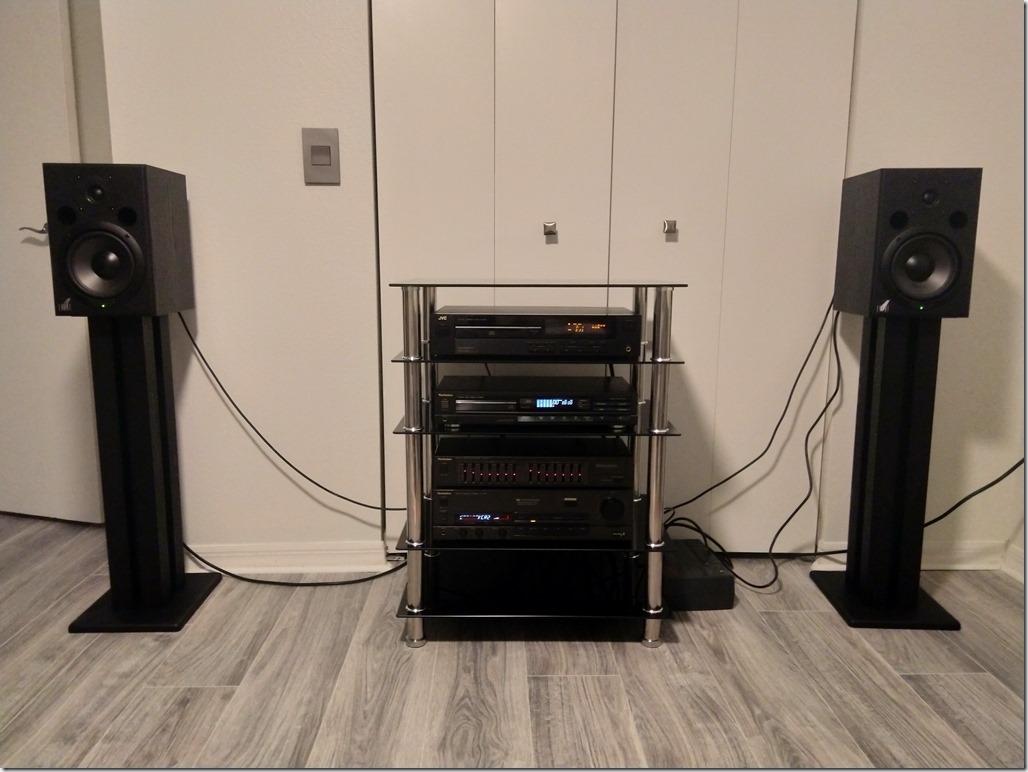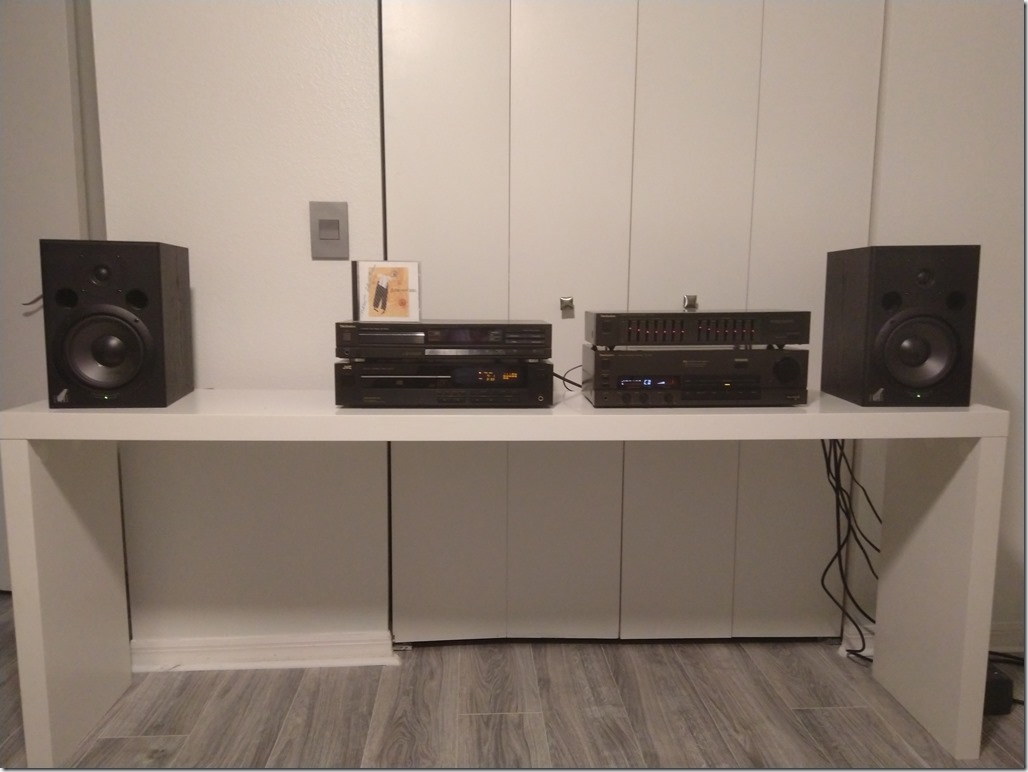In the last installment in this series, I had added subwoofers to my stereo system and was thinking that there wouldn’t be a stage 5, which is the replacement of my small powered monitor speakers with large tower speakers. In the six months I’ve been using this setup, I am still enamored with it, and have not felt the need to upgrade the speakers. However, in the other part of the system, changes have happened, mostly out of fortunate opportunity.
The biggest purchase I’ve made in my stereo system is the subwoofers, by a massive margin. Everything else has been had for well under $100 each. Because second-hand stereo equipment can be found cheaply, it’s good fun to just try it out to experience the differences. I had talked about this before with my small collection of CD players. But one day at a thrift shop, I found a new receiver/amplifier. It was made by Nakamichi, which is a brand you don’t see or hear about very often, because it is considered a high-end brand. Checking the back of the amp, there were preamp outputs available, so it was immediately compatible with my system configuration. The price was fine, $25, so it came home with me the same day.
Cleaning and testing was brief and successful. The amp was clean and had no issues. Sound-wise, it sounded a bit brighter than my Technics, which is consistent with other online reviews I read on the product. Their words were more like "harsh" and "highly-detailed", which sounds a little negative, but as I’m learning with everything in audio, there is no truth, no absolute. You just have to like what you have or replace it with something else you like better. And two people can have two totally different opinions about the same thing.
So the Nakamichi has become my new default stereo. The Technics amp and EQ have been moved to my secondary pile of equipment in another room. And I have been enjoying my system.
Shortly after that purchase, I came across an online auction of a recording studio. Among some of the items being sold were two "DVD players". Researching the players a little more, I learned they are technically called "universal players", meaning they can play multiple formats. While you can buy most any $30 DVD player and have it play CDs as well as DVD-Audio, the format of SACD (Super Audio Compact Disc), is much harder to come by. SACD players are usually $1000+ unless you get into a universal player that also handles that format, in which case you’re in the $800 range. Regardless, getting into SACD is not a cheap venture at all.
I actually do own a couple SACDs that I have never been able to listen to, as well as a DTS (yet another high-end format) disc. These players in this auction would support all of these formats. They were Pioneer Elite 47ai units. Long story short, I placed absentee bids on both and won both, one at a low price and one at a high price. After commission and all, they cost $75 each. One will eventually be sold off, but the other has been integrated into my system.
Being in a professional recording studio, clearly the devices were well taken care of. And upon some listening tests, I have to begrudgingly admit that things do sound better on higher-end equipment. Granted, I am comparing 30-yr old consumer CD players to a 10-yr old professional player. There should be some improvement, right? And finally, being able to hear what SACD sounds like was a nice experience. Was it amazing? Well, no. But – and this is an important but – I have made many small improvements to my stereo in a relatively short period of time, and each one has brought with it a positive change, no matter how small. At no time have I done an upgrade and been disappointed. Are things absolutely perfect? Of course not. I have CDs that will skip in one player, but not another. So, I do keep two players on my stereo.
And that’s where my system is right now: The Nakamichi amp, the JVC CD player, and the Pioneer Elite universal player.







